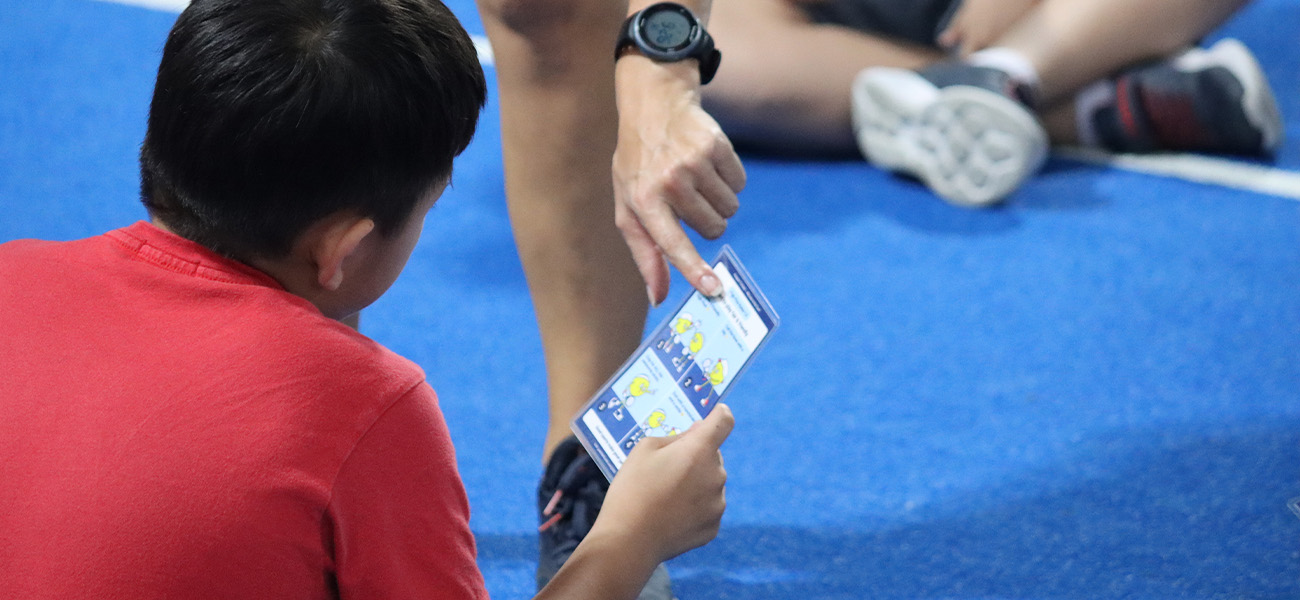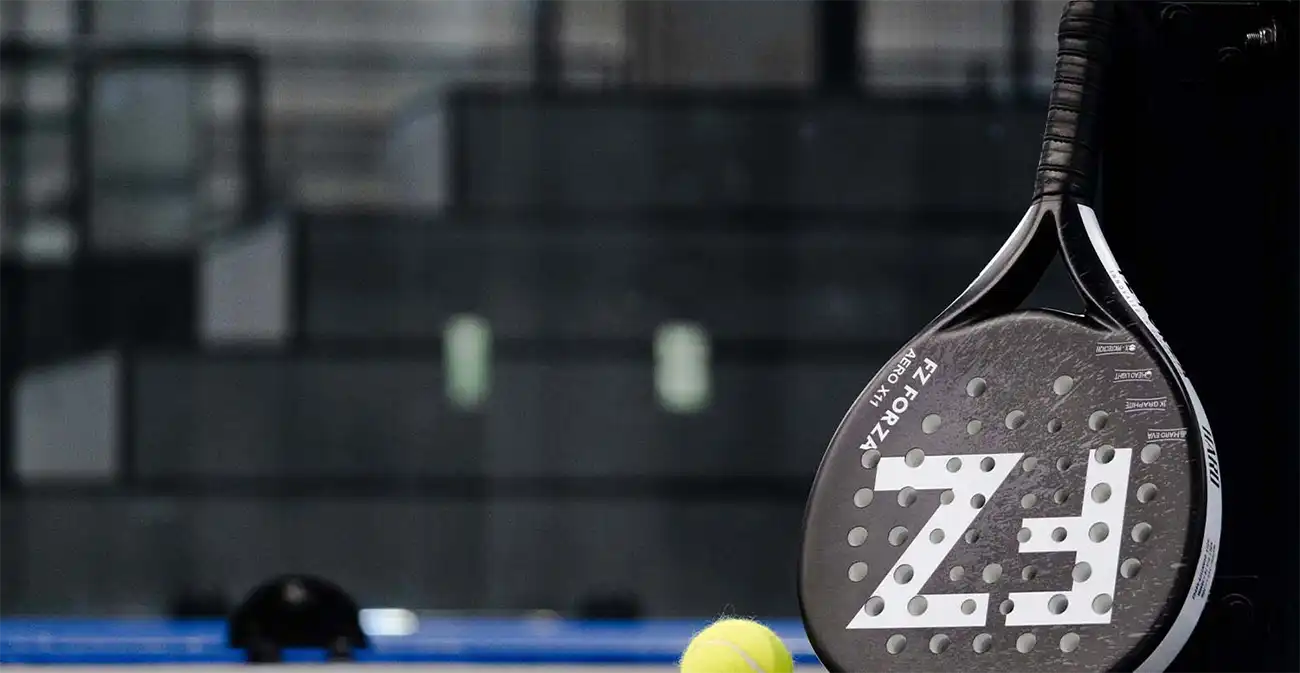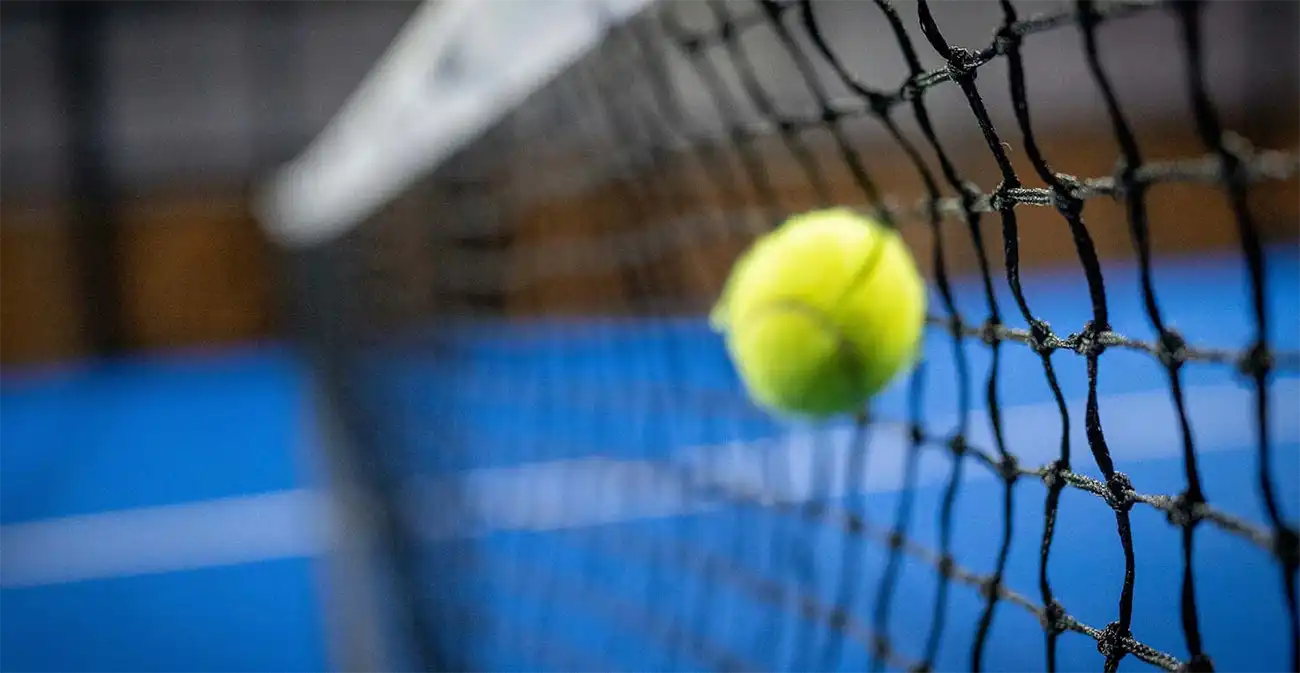Five key takeaways:
- Playing padel with kids works best when it’s fun, active, and built around games.
- You don’t need to be an expert coach to help kids learn padel, just keep things simple and playful.
- The Passport to Padel Juniors cards give you ready-made ideas for skills and games in every session.
- You can adapt each activity to suit the kids’ age, energy level, and attention span.
- Helping kids learn teamwork, confidence, and movement is just as important as teaching the shots.
Getting started with playing padel
Getting kids started with padel doesn’t need to be complicated. The game is easy to pick up, and with the right approach, it can be a great way to help children stay active, learn new skills, and enjoy themselves. Padel suits young players because the court is small, the ball is soft, and the rules are straightforward. But how you introduce the game can make a big difference, especially for children aged 5 to 12.
In this post, you’ll find five simple tips for coaching or playing padel with kids. These ideas come from tried-and-tested methods used by experienced youth coaches. They focus on making the game fun, building confidence, and helping kids develop at their own pace. Each tip also links closely to what the Passport to Padel Juniors cards series, by Padel Skill Cards, are designed to help with, using a playful and skills-based approach that fits how children naturally learn.
1. Make it fun: focus on games before technique
The easiest way to lose a child’s interest in padel is to turn the first few lessons into lectures. Kids respond best to games, not drills. That doesn’t mean there’s no learning, only that the lesson is framed as play. Chasing balls, inventing challenges, and laughing with teammates helps kids build a strong emotional connection to the game. The skills will follow, but enjoyment needs to come first.
For younger kids especially, padel gives them a chance to explore. They move in different directions, see how the ball behaves off the wall, and get used to how the racket feels in their hands. It’s fine if they miss or hit awkwardly at first. Most of their progress will come from trial and error, not from formal instructions. That’s exactly what the Passport to Padel Juniors cards are designed for. The front of each card introduces a skill in a simple, friendly way, while the back has a game that helps build that skill through movement and play. You can adjust the activities to fit the energy level, age, or size of your group so that kids stay interested and feel encouraged to keep going.
2. Let kids figure things out
Kids don’t need every move explained to them. In fact, if you’re constantly telling them what to do it can get in the way. They learn better when they’re allowed to explore for themselves, watching what others are doing, trying it out, and adjusting along the way. That’s why good padel coaching lets kids experiment first, then only steps in with feedback once a pattern starts to show. It’s about helping them reflect on what worked and what didn’t, rather than always correcting them from the start.
When you let kids work things out on their own, their confidence builds naturally. They take more risks, listen more closely, and develop a sense of ownership over their learning. In padel, that might mean discovering the bounce of the ball off the wall or figuring out the best way to hold the racket. The coach’s job is to guide, not control. The Passport to Padel Juniors cards are designed with this in mind. They introduce a skill simply, without overloading the youngster with instructions, and then suggest a game where learning happens through action.
3. Keep it short, simple and playful
Young kids have short attention spans. When you’re coaching 5 to 8-year-olds, aim for sessions that last about 45 minutes, with regular changes in activity to keep things interesting. Working with 9 to 12-year-olds means that an hour is usually enough. Within that time, try to mix games, short rest breaks, and light instruction so the session feels more like play than a formal class. The more active the kids are, the more they’ll pick up.
Tone makes a big difference too. If the session is full of rules, whistles, and strict instructions, it can feel stiff and boring. But if it feels relaxed and playful, even shy kids are more likely to join in. When you show up with warmth, energy, and a sense of fun, you set the tone for a space where kids feel comfortable. It’s completely fine if they laugh, mess up, or get a bit silly. The Passport to Padel Juniors cards are designed with this in mind, offering games that help reset the energy and keep everyone involved.
4. Build skills into the fun
Just because it’s fun doesn’t mean it’s not proper learning. Behind every game or challenge, there should be a reason for doing it. You might be helping kids build coordination, get used to the court, or start working together as a team. A simple race across the court can improve balance and direction changes. A target game might help with racket control. The fun just hides the structure underneath.
When you’re coaching or as parents playing with your kids, it helps to layer skills into the games without making a big deal of it. You can choose activities that keep kids moving, reacting, and thinking, while quietly helping them improve at padel. The Passport to Padel Juniors cards are made with this in mind. Each game ties directly to a core skill shown on the front of the card. That means you can run sessions that have a clear purpose, without having to invent all the activities yourself.
5. Don’t forget values and teamwork
Padel is a doubles game, which means teamwork is one of the first things kids will learn. You need to show them how to share space, support each other, and communicate, even when they’re just starting out. A good coaching session doesn’t only teach padel skills. It also helps youngsters develop patience, listening skills, and respect. This is especially useful for kids who might not feel confident or outgoing. Playing in pairs gives them a safe way to build social skills while having fun.
You can also teach values like fair play and kindness through how you manage the group. Who gets picked first, how disagreements are sorted, and how you handle a youngster who is struggling all shape how they learn to be good teammates. The Passport to Padel Juniors cards help with this too. While they focus on physical and technical development, many of the games are designed to encourage cooperation, sharing the ball, and cheering for a partner. These moments are just as important as learning the skills themselves.
How Padel Skill Cards support better learning through play
The five starter tips for playing padel with kids all have one thing in common: the learning experience needs to be fun, active, and suited to their age and attention span. That’s exactly where the Passport to Padel Juniors Skill Cards can help. Designed to keep kids engaged while teaching real skills, these cards are a handy tool whether you’re a parent or a coach. Whether your session focuses on movement, games, or learning how to play with others, the cards give you a way to structure activities while still keeping things playful.
The cards encourage physical activity by turning basic movements and shots into easy, kid-friendly challenges. Each one focuses on a single skill and pairs it with a game, so you have a ready-made plan and the kids have something fun to look forward to. They’re not just repeating strokes. They’re running through obstacle courses, testing their balance, and playing short, simple games that make padel feel like an adventure. These activities help them move in a natural way, build coordination, and stay involved without needing long explanations or complicated rules.
The cards also help with social growth. The team-based games promote fair play, sharing, and working together, which is especially useful when you’re working with younger kids who are still learning how to follow instructions and get along with others. You can adapt each activity to the mood of the group, mixing calmer tasks with higher-energy ones or changing direction when attention starts to fade. This kind of flexibility keeps the focus on learning through action while helping you build confident and capable young players.
Use case sample: learning padel etiquette through play and practice
Background context
When you introduce kids to padel, you’re not just teaching strokes and serves. You’re also helping them understand what it means to be a good teammate and respectful opponent. One of the first social lessons on court is how to show good sportsmanship. This moment, lining up to shake hands after a match, might seem small, but it sets the tone for how kids behave on and off the court. In this session, a group of young players aged 8 to 11 used the Passport to Padel Juniors cards as part of their training, with a focus on teamwork and respect.
Session setup
The coach chose one of the Padel Skill Cards for this lesson which was to encourage cooperation. The front introduced a skill linked to playing together as a pair, while the reverse featured a simple game that involved working in teams and taking turns. After a few rounds of the game, the coach paused the session to talk about what happens when the game ends. She asked the kids how they felt about winning, losing, and supporting their teammates. Then she showed them how to meet at the net, make eye contact, and shake hands.
What happened on court
The kids quickly picked up the routine. Some were a little unsure at first, but with gentle reminders and encouragement, they joined in. The coach made it light and friendly, reminding them that padel is a team sport and that showing respect makes everyone feel good about playing. The group then replayed the game using what they had just learnt. By the end of the session, they were not only enjoying the drills but also remembering to shake hands without being asked.
Observations and reflections
You could see the kids growing more confident, not just with their shots but with how they acted as part of a group. The simple act of shaking hands helped shift their mindset from individual play to shared experience. The Padel Skill Cards gave the coach a structure to build around, but the human side, the talk, the laughs, the guidance, made it stick.
Takeaway for other coaches
If you’re working with kids, don’t skip the small social moments. They’re just as important as the technical ones. The Passport to Padel Juniors cards help you blend these lessons into your sessions naturally. With a bit of planning and a lot of heart, you’ll give young players the skills to succeed on the court and in how they treat others.
What’s next for playing padel with kids
As padel continues to grow, structured programmes like Passport to Padel Juniors are helping to shape how kids experience the sport from the start. Instead of leaving beginner sessions to chance, coaches and parents now have clear, age-appropriate ways to build skills and confidence through play. These kinds of tools are making it easier to deliver quality sessions, even for those who are new to coaching or short on time. Kids benefit because their experience of playing padel becomes more enjoyable and consistent.
Looking ahead, you can also expect to see more digital and interactive versions of coaching tools. This could mean animated videos, mobile apps, or online libraries that support how you teach on court. While physical cards keep things grounded and simple, adding a digital layer can help you plan ahead, track progress, or even give kids something fun to review between sessions. Used together, these tools can make playing padel more engaging and accessible for the next generation.
Final thoughts
If you’re playing padel with kids, the most important thing to remember is that fun should come first. Skill development and structure have their place, but they work best when the session feels exciting and natural. Kids learn through doing, and they respond best when they feel included and confident.
Tools like the Passport to Padel Juniors cards are helpful because they give you a clear structure while still keeping things flexible. Whether you’re a coach or a parent, you can adapt each card to suit the group, the mood, and the moment. It takes the guesswork out of session planning and helps you focus on what matters most, creating a positive experience on court.
Padel is a sport built around movement, connection, and teamwork. When you introduce kids to it in the right way, you’re giving them more than a sport, you’re giving them a space to grow.
FAQs
- What age is best to start playing padel? Kids can start playing padel from as young as five years old. The small court and soft ball make it a good fit for young players to begin learning the basics while having fun.
- Do kids need special padel equipment? Yes, lighter rackets and lower-compression balls are best for younger players. This helps reduce the risk of injury and makes it easier for them to control their shots.
- Is padel safe for young kids? Padel is generally very safe, especially when games are designed for age and skill level. Most injuries can be avoided with proper warm-ups and by using the right gear.
- Can parents use the Passport to Padel Juniors cards too? Yes. The cards are designed for both coaches and parents. You don’t need to be an expert, just willing to help kids play and learn in a positive way.
- How long should a kids’ padel session last? For kids aged 5 to 8, a 45-minute session is usually enough. For kids aged 9 to 12, up to an hour works well, especially if the session includes plenty of variety.
What makes padel different from other racket sports for kids?
Padel uses a smaller court and softer ball than tennis, and the walls add an extra element of fun. It’s easier to pick up and more social, making it ideal for kids.
Discover more about Padel

Playing padel with kids: 5 easy to use starter tips

Best kids padel coaching and what to look for

10 ways you can recognise a great padel club